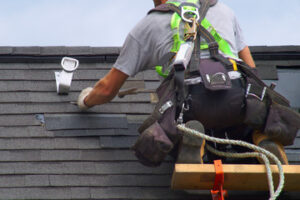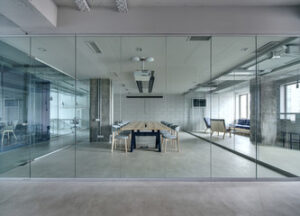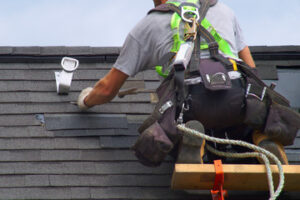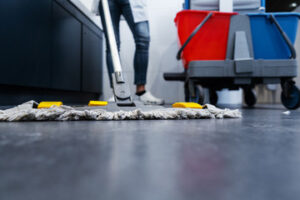A well-maintained roof is critical to the health of your home. Periodically check your roof flashings, especially around chimneys and roof windows. When you have a water stain on the ceiling, go into your attic and trace the leak back to its source.

Leaks are often caused by damaged vents. Replace the boot and base of the vent, and screw it down using rubber-washer screws. For professional help, contact Roof Repair Helena MT.
If shingles are missing or damaged, it’s important to repair them immediately. Missing shingles leave your roof vulnerable to leaks and other damage, especially since the asphalt layer that protects your home from weather elements is exposed. If you’re not comfortable working on a roof, call a pro to inspect and handle any necessary repairs.
Asphalt shingle damage is most often caused by wind-driven debris, but it can also be a sign that the adhesive layer was not fully cured. When a professional installs shingles, they’ll usually take extra care to ensure the adhesive is fully set and that the shingle can hold up to wind and other weather elements. If the shingle blows off within six months of installation, there’s a good chance that the adhesive wasn’t fully cured and you should contact your roofer to address the issue.
Tile roofs are more durable than shingle roofing, but they’re not immune to damage. Regular maintenance includes checking for cracked, warped or loose tiles. These can be easily replaced, but you should also look for holes and cracks that may need repair. Damaged ridge tiles can expose the underside of the roof to moisture and water, which can cause wood rot and other serious problems.
Cracked and missing shingles are more difficult to fix, but you can try to mask the damage by using caulk or wood putty. You should also check for broken and missing vents, which can lead to a variety of issues including mold and mildew growth. If you have a metal or plastic roof vent, check for a cracked housing or broken seams. You can repair these by removing the nails underneath the shingles on both sides of the vent and screwing it back in place with rubber-washered screws.
Depending on the type of shingle, you may be able to use a tarp to cover a hole or replace a missing section. Some shingles have a strip of adhesive on the bottom, so you may be able to simply pull up the old shingle and glue in the new one.
Leaks
A leaking roof can cause major problems. It can create water spots, damage the drywall, and lead to mold growth and other structural issues in the home. It is important to address the problem as soon as you notice any signs of leaks. If you ignore the leaks, they could become more serious and require extensive repairs.
A common sign of a leak is brown or black water stains on the ceiling. Usually, these stains are caused by a roof leak that has been ignored over time. If you notice these stains, it is important to call for a roof repair immediately.
Another common sign of a roof leak is a sagging bulge in the ceiling. If you notice a bulge, it is important to puncture the lowest point of the bulge with a screwdriver and put a bucket underneath to catch the water. This will prevent the water from continuing to collect in that area and spreading throughout the ceiling. It is also important to remember that if the water stains are in multiple rooms, it can indicate a bigger problem with the roof.
Other signs of a roof leak are moisture in the attic, mold or mildew growth on the attic floor or ceiling, and damaged shingles around the leak. It is also important to check the attic insulation and rafters for moisture. Typically, the leak will show up first in the attic, so it is important to inspect regularly for moisture.
Leaks from metal pipes and flashing are often more difficult to find, but it is important to assess each component individually. Depending on the assessment, the pipe collar, rain cap, or storm collar may need to be repaired or replaced. It is also important to make sure the base flashing is properly installed and tucked in.
If you think you have found the source of a leak, it is helpful to have a helper on the inside of the house watching for telltale drips or musty odors. Having someone outside with a garden hose can be helpful to soak the area and isolate the source of the leak.
Flashing Issues
Flashing is a crucial part of a roof and plays an essential role in protecting the inner roofing structure. However, flashing is also subject to a number of issues that can cause it to fail and leak. Thankfully, a skilled and experienced roofing contractor can easily repair these problems to prevent costly and dangerous damage to your home.
Leaking Roof Flashing
One of the most common symptoms that indicate a flashing problem is water infiltration. While it may be only a few drops of water, this moisture can create the ideal environment for mold to grow and pose health risks for your family. Additionally, long-term exposure to water can damage insulation, rot wooden structures and weaken the integrity of walls and ceilings.
The best way to spot a flashing leak is to perform a simple test using a garden hose. Have someone stay inside the house while you climb a ladder and carefully run a low-pressure hose around areas where the flashing and roof intersect, such as chimneys, vents, or skylights. If the water stops flowing when you run the hose over a specific area, it’s time to call for a roof repair.
Loose Flashing
Over time, it’s very common for flashing to become loose. This can be due to age, extreme weather conditions, or poor installation. It’s important to check your flashing regularly and look for cracks, rust, or any other signs of damage. If you find that your flashing is loose, a roofing professional should be called to inspect the condition of the roof and determine if there are other underlying problems that need to be addressed.
A skilled roofing contractor will be able to quickly and safely remove the shingles, expose the flashing, and repair any gaps or other issues. However, if the flashing is severely damaged, it may need to be replaced entirely rather than repaired.
Roof flashing is not something that you should try to do yourself, especially if you’re not comfortable working on a ladder or roof. This is a job that should always be left to the professionals who have the training, tools and skills needed to get the job done right.
Slope Issues
Slope problems can occur when the drainage system is not properly sized or positioned to handle the amount of rainwater it receives. This may include having too few downspouts, or having them too close together. Adding more downspouts or altering their positioning may help to alleviate this issue. Slope issues can also be corrected by strengthening weak zones within the slope using techniques like soil nailing and geogrids. Additionally, monitoring the slope on a regular basis can allow for early detection of potential instability before a failure occurs. Slopes that aren’t monitored over time can lose integrity and suddenly fail in a process known as sloughing.








